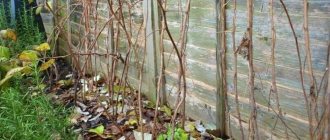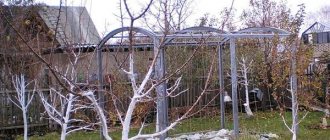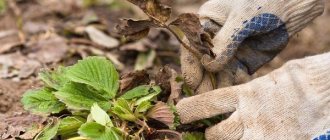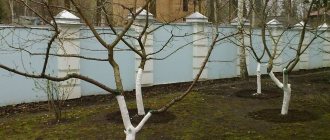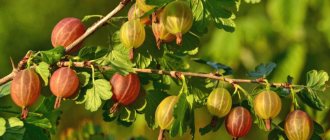In the fall, flower growers begin a busy time: they need to have time to prepare the plants for wintering before the cold weather. Hydrangea also needs such care, regardless of its type and age.
We'll tell you how to care for hydrangeas in the fall. Let's talk about preparing for winter, taking into account the varieties - paniculate, tree-like, large-leaved species require different attention.
Autumn feeding of hydrangeas
The development of green mass and flowering take a lot of energy from the plant and deplete the soil. Therefore, hydrangea needs to be fed in the fall. If you apply fertilizers on time and in the right dosage, the bush will withstand wintering more easily even in difficult weather conditions, and next year it will delight you with abundant flowering.
The timing of fertilizer application depends on the region. For example, in the southern regions of the country it is permissible to feed hydrangea in mid-October, but in the middle zone and Siberia the work must be completed in the first half of September. The later nutrients are added, the worse they are absorbed by plants.
In the fall you need to strengthen the roots, this can be done with the help of potassium and phosphorus. Nitrogen is prohibited at this time of year - it stimulates the development of shoots that will not have time to become woody and will die. Mineral fertilizers include superphosphate (50 g/sq.m.) and potassium sulfate (25 g/sq.m.). In dry form, these fertilizers can be scattered over loose soil, then watered generously. Another option is to prepare a solution. To do this, the specified amount of mineral fertilizers is diluted in 10 liters of water.
Fertilizing hydrangea with ash is strictly prohibited. This plant prefers acidic soils, and ash shifts the soil reaction closer to alkaline
Gardening tips and tricks for caring for hydrangeas in September
Experienced gardeners know several tricks that will help in caring for hydrangeas.
- When rooting a plant, you need to carefully select the site. This is a sunny flower, so it needs a bright, spacious area. But in the midday hours a light penumbra should fall on it. Only in this case will the plant delight you with large, fluffy inflorescences.
- If the soil where the flower is located is alkaline and it is not possible to add needles, then you can acidify the soil with citric acid.
- In order for young seedlings to quickly adapt to a new place, the substrate in which the plant grew before must be completely removed. To do this, a seedling with a lump of earth is placed in water, after which the roots are straightened and only then placed in the planting hole.
- Planted seedlings are well mulched and covered for the winter. If the shoots freeze and die, the preserved root will sprout new shoots.
Treatment against pests and diseases
Insect pest larvae and adults can hide in plant debris, stems, and soil. Here they successfully winter, awaken in the spring and begin activity, causing serious damage to the hydrangea. Pathogens and pathogenic fungi will also overwinter in the soil, so preventive autumn treatment is important.
Spraying is carried out after harvesting a flower bed or tree trunk. Fallen leaves, dry branches, weeds, and garbage must be carefully collected and burned outside the flower garden. If this is not done, the processing efficiency will be reduced by 2 times.
It is best to use 3% Bordeaux mixture for spraying. This drug is used to treat the bush itself and the ground around it at a distance of at least 1 m or according to the projection of the crown.
Changing the watering mode
Throughout the season, hydrangea consumes a lot of moisture, but the closer it gets to winter, the less water it needs. Experienced owners stop watering completely in the fall. Excess moisture in combination with low air and soil temperatures can provoke the development of putrefactive processes on the roots.
However, the soil should not be allowed to dry out. The florist needs to carefully monitor its condition. If the autumn has been dry this season, moderate watering should be done once a week. The plant responds normally to such care.
Moisture-charging watering is not needed for hydrangea, even if it is a tree-like form.
What do hydrangeas need in September?
Hydrangea is a fairly popular flowering plant. It can often be found not only in private plots, but in squares and parks.
Autumn care to prepare the shrub for winter and lush flowering in the next growing season includes a number of agrotechnical measures.
Here is a list of what to do:
- therapeutic and preventive treatment of perennials against diseases and pests, including spraying;
- proper watering of the plant;
- feeding;
- proper pruning and bush formation;
- shelter for the winter.
These procedures must be done competently and seriously. Sometimes mistakes in caring for a flowering crop can lead to the bush not blooming or even dying.
Rules for autumn pruning of hydrangea
The timing of pruning hydrangea depends on its type. It is customary to prune large-leaved trees in the first or second ten days of September so that they have time to recover before the first frost. Tree and panicle varieties are pruned after frost, most often in late October or early November, depending on the region.
Pruning nuances for paniculate hydrangea
This type of plant must be pruned in the fall. The peculiarity of paniculate hydrangea is that flowering occurs on the shoots of the current year. Autumn pruning stimulates their formation.
Need to remove:
- dried and damaged shoots;
- faded inflorescences;
- branches growing inside the crown.
The skeletal branches are shortened, leaving 2–6 buds on each shoot. It is also better to remove weak-looking branches, as they will be of no use.
It is advisable to disinfect large sections; for this purpose, you can use garden varnish.
The nuances of pruning tree hydrangea in the fall
This type of hydrangea also blooms profusely on the current year's shoots, and therefore requires autumn pruning. If this is not done, next year the crown will be very thick, which will negatively affect the flowering and appearance of the bush.
The work is carried out according to the following algorithm:
- All leaves are removed, except for the very top ones.
- Branches with signs of damage, cracks, and dried branches are cut off.
- Branches over 4 years of age are identified and removed.
- All shoots growing inside the bush, as well as shoots, are cut out.
- Skeletal branches are pruned for flowering, leaving 2–3 pairs of buds on each.
Faded inflorescences can be left on the bush only if it is grown in regions with little snow in winter. Otherwise it will be a good frame for snow to stick on. The branches bend under its weight, and can break if there is a gust of wind.
There is a simplified way of pruning tree hydrangea - to the stump. All shoots are cut at a height of 15 cm from the ground.
The nuances of pruning large-leaved hydrangea
Large-leaved hydrangea can be pruned in the fall, but be very careful. This plant blooms profusely on last year's shoots; improper pruning can seriously damage the bush.
Sequence of work:
- Identify and remove two-year-old shoots. They will only thicken the bush, depriving it of its attractiveness.
- Trim the inflorescences so that two buds remain at the end of the branch. There should be at least 1.5 cm between them and the cut.
- Remove thin growth and dry branches.
You need to work with pruning shears or garden shears with care so as not to accidentally hit the buds with the blades.
Be sure to leave this year's shoots that do not grow inside the bush and do not show signs of disease. Next year they will begin to bloom.
Botanical description
Tree hydrangea is a shrub from 1 to 3 m high with a rounded crown and slightly pubescent shoots. The leaves of Hydrangea tree are elliptical or ovate, 6 to 20 cm long, with jagged edges and a heart-shaped base, bare on the underside of the blade. Their upper side is green, the lower side is gray. A few sterile flowers with a diameter of about 2 cm, together with small fertile flowers, are collected in corymbs up to 15 or more centimeters in diameter. At the moment of opening, the white flowers have a greenish tint, then the green disappears, and by the end of flowering the inflorescences turn pink. The fruit of tree hydrangea is a capsule up to 3 mm in size. The plant blooms profusely and for a long time from the first half of July to mid-autumn.
Growing hydrangea in the garden - planting and care
The culture is distinguished by its rapid growth, love of moisture, demanding soil composition and winter hardiness. This species tolerates lime in the soil more easily than other hydrangeas.
- Turkish cloves: growing from seeds, planting and care
Features of hydrangea propagation in autumn
In autumn, hydrangea is propagated by dividing the bush, layering and suckers. This plant can be propagated by green cuttings only in summer; they will not take root at other times of the year.
An old hydrangea can be transplanted to a new place, further propagating it by dividing the bush. Most often this is done with large-leaf (garden) species. Paniculata and tree hydrangeas tolerate such manipulations less well. Favorable times for dividing a bush depend on the region, usually September or October.
You can try to propagate the plant by layering, but this method gives insignificant results. The progress of work is as follows:
- The shoots suitable for the role of layering are determined.
- From them, they dig a groove in the ground, the depth of which is about 15 cm.
- The shoot is bent to the ground and secured with a wooden or metal pin. The top of the shoot should be on the surface; it cannot be sprinkled.
- The ditch is covered with earth.
- The cuttings are watered abundantly.
As soon as frosts begin, the buried area is insulated with mulch, a layer of at least 15 cm. Sawdust or straw are suitable, you can use pine litter or lowland peat - they will additionally acidify the soil, which is important for hydrangea.
In spring, the groove must be cleared of soil and the layering must be inspected. If it has taken root, use a sharp pruner to separate the shoot from the mother bush and transplant it into a tree. Here the young plant is carefully looked after throughout the season. If it can take root, after 2–3 years you can plant the hydrangea in the place chosen by the grower.
What different types of hydrangea need in September
The main difficulty in caring for an unpretentious plant is that there are several varieties of the crop.
The most famous and popular three types:
- paniculata;
- tree-like;
- large-leaved.
Each of them needs special care. But in the first autumn month, all types of perennials require the same care, including watering, fertilizing, preventive spraying against pests, insects and diseases. The only differences are pruning and covering for the winter.
Preparing hydrangea for winter
After pruning and propagation, the plant begins to prepare for the upcoming winter. Hydrangea is a heat-loving species, so such an event is mandatory for all regions, with the exception of the Black Sea coast of the Caucasus and the southern coast of Crimea. The preparation technique is different for each type.
Preparing paniculate hydrangea
This species is the most unpretentious of the three. The color of paniculate hydrangea is on the shoots of the current year, so frosts do not affect the quality of flowering. By autumn, almost all the branches become lignified, and they are no longer afraid of negative temperatures.
The weak point of paniculate hydrangea is the roots. To prevent them from freezing, the tree trunk circle along the entire crown projection is mulched with earth, manure or peat that has been rotted for at least six months. The layer thickness should be between 15–20 cm.
It is good to use pine litter or high-moor peat. These materials acidify the soil, which is especially important for paniculate hydrangea. If it is impossible to get high-moor peat or pine litter, compost will do. Earth is used as mulch only as a last resort, when nothing more suitable can be obtained.
In the spring, the powder must be removed, but gradually, so that the roots do not experience stress due to a sharp change in soil temperature.
Preparing tree hydrangea
Most varieties of tree hydrangea are unpretentious and winter hardy. The only exceptions are large-flowered species. They are grown in warm regions and in central Russia, in the Urals and Siberia in winter they can weaken or die.
Preparing tree hydrangea for winter involves hilling the tree trunk circle. For this purpose, you can use the soil from your site or the materials listed above. The radius of hilling is measured from the middle of the hydrangea and is 30–40 cm, depending on its size.
The branches do not need to be covered - flowering occurs on the shoots of the current year.
Preparing large-leaved hydrangea for winter
This species is characterized by weak frost resistance, and therefore requires shelter. This work must be done before the first frost: flower buds are damaged even by light frost. Ideally, at the time of sheltering, the temperature during the day will be kept at 6–8 °C, and at night – 2–4 °C.
Table of approximate terms of warming large-leaved hydrangea.
| Region | Optimal time for insulation |
| Central Russia, including the Moscow region | First ten days of October |
| Leningrad region, Siberia, Ural | Last ten days of September |
| North Caucasus, Crimea, Rostov region | From the second half of October to the beginning of November |
You should always pay attention to the weather forecast: frosts may occur earlier than usual. If the weather is unclear, you can cover the shoots in advance. Large-leaved hydrangea does not suffer from rotting of shoots, so it is not dangerous for it to push back the deadlines for work.
Stages of work
Algorithm for preparing large-leaved hydrangea for winter:
- Remove all leaves.
- Hill up the trunk circle according to the method described for the tree and paniculate species.
- Gather all the shoots into one bundle and tie them securely with twine.
- Wrap the bundle with spunbond with a density of 60 g/m2 or higher. You need to make at least two layers. If the winter is expected to be harsh, the shoots can be covered with 3-4 layers of spunbond.
- Secure the material with twine.
- Stepping back about 20–30 cm from the hydrangea, make a mesh frame in a circle. It should be 15–20 cm higher than the crown.
- Fill the space between the frame and the covered hydrangea with dry leaves or straw. You can use wood shavings or sawdust. Materials are poured to the very top of the frame - the top of the head should be covered.
- After filling, wrap the frame with plastic film so that water does not get inside.
Oakleaf and serrated hydrangeas are insulated in the same way.
If there is no net or the area is in a windy place, you can cover the hydrangea for the winter in another way. For this you will need unnecessary old boards.
Work progress:
- Remove leaves that have not yet fallen off.
- Place boards next to the bush.
- Gather the shoots into a bundle and wrap them with spunbond.
- Carefully, so as not to break it, bend the bush to the boards and tie it to them with twine.
- Fix the bush in an inclined position. The boards are not used for fixation, but to protect the branches from the cold ground.
- Cover the bush with dry leaves, straw, sawdust, and peat.
- Cover the pile first with spunbond, then with overlapping plastic film to prevent water from getting inside.
Using these methods, you can insulate hydrangea seedlings planted this fall or less than 2 years old. Regardless of the species, they winter poorly in Russian conditions.
In spring, the cover from large-leaved hydrangea is gradually removed so that there is no temperature shock.
